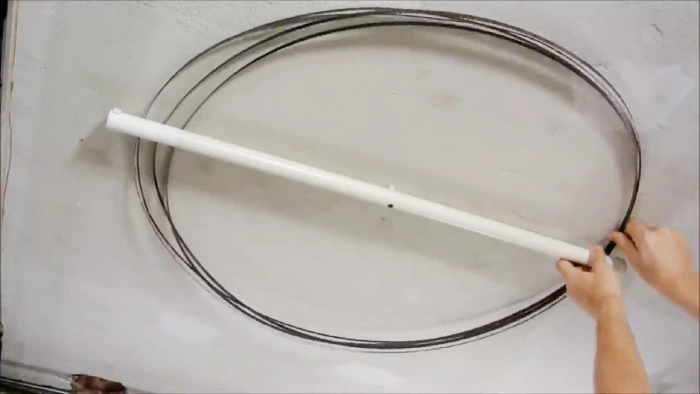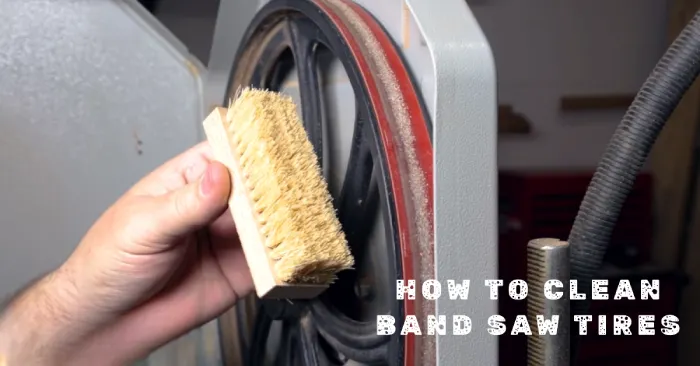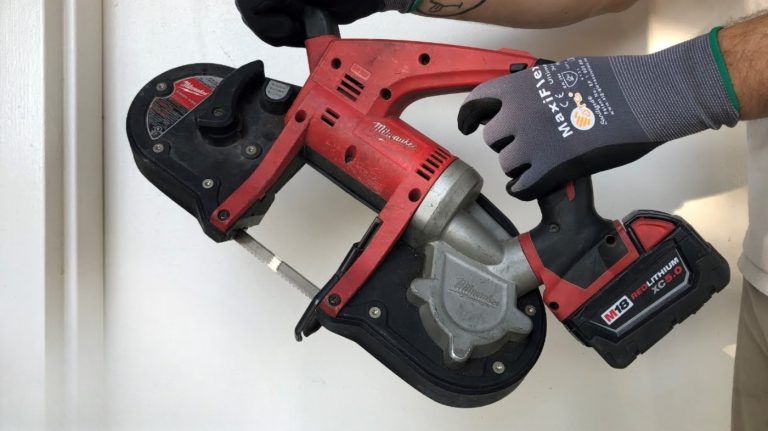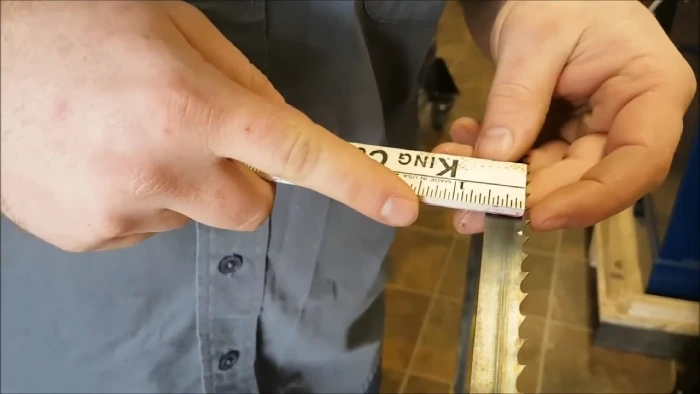How to Store Bandsaw Blades: 6 Steps to Follow
Bandsaw blades are a valuable investment in your workshop, and taking care of them should be a priority. Also, these blades should be stored properly to maintain quality and extend lifespan. But how can you store them to ensure their longevity properly?
I have researched online and found a simple procedure to prevent damage or rust on the blades. Ensure that the blades are thoroughly cleaned to remove any debris or grime that may have accumulated. After that, utilize proper folding techniques and materials for safe and space-efficient storage.
You should choose a dry, cool, secure storage location free from direct sunlight. In this discussion, I will explain the essential steps you need to take to store your bandsaw blades effectively. So, let’s get started on the path to a longer-lasting, hassle-free bandsaw blade storage solution.
How to Store Bandsaw Blades: Key Steps to Follow

When storing bandsaw blades, I’ve listed a few steps you should follow to ensure optimal results.
- Clean the blade before storage
- Fold the blade properly
- Use proper materials for packaging
- Choose the appropriate storage location
- Store the blade vertically
- Periodic checks and maintenance
Step 1: Clean the Blade Before Storage
Before storing your bandsaw blade, I suggest you thoroughly clean the blade to remove any sawdust, resin, or debris that may have accumulated during use. This is crucial for maintaining the blade’s performance and longevity.
A clean blade prevents corrosion and ensures that it’s ready for action when you need it next. You can use a brush or compressed air to clean the blade effectively. Gently brush off any loose sawdust or debris from the teeth and body of the blade. If there’s stubborn residue, compressed air can blow it away.
Step 2: Fold the Blade Properly
Proper folding techniques must be employed to ensure safe and space-efficient storage of your bandsaw blades. When folding, there are various methods you can choose from, such as the three-coil technique or the collapsed hoop method.
Each method has advantages, so choose the one that suits your needs best. Whether you opt for Method 1, Method 2, or the Steering Wheel Method, follow the instructions diligently.
During the folding process, don’t forget to wear heavy cloth gloves and long sleeves to protect yourself from any potential injuries.
Step 3: Use Proper Materials for Packaging
For secure and compact storage of your bandsaw blades, you should utilize proper materials for packaging. Wire ties, twist ties, velcro pieces, or cable ties can keep the blades secure and compact.
Consider inserting cardboard sheets between the blades or applying plastic protection stripes on top of the teeth to provide additional protection.
As far as I can tell, Metamob’s plastic protection stripes are a great choice due to their safety, efficiency, and reusability features. These stripes offer excellent protection for your bandsaw blades, ensuring they remain in optimal condition during storage.
Step 4: Choose the Appropriate Storage Location
Several options exist when choosing the appropriate storage location for your bandsaw blades. Pegs on walls, wooden dowels, hooks on lumber racks, or even a dedicated piece of wood with a curved channel can all be suitable choices.
However, I recommend a magazine-style rack, which might be the best option if you have a smaller collection of high-end saw blades. This rectangular wooden frame, mounted to the wall with slightly slanted individual slots, provides a unique look to your workspace and ensures easy access to your blades.
Remember to be mindful of potential dangers, especially when dealing with larger blades, and always have easy access to information about each blade’s specifications.
Step 5: Store the Blade Vertically
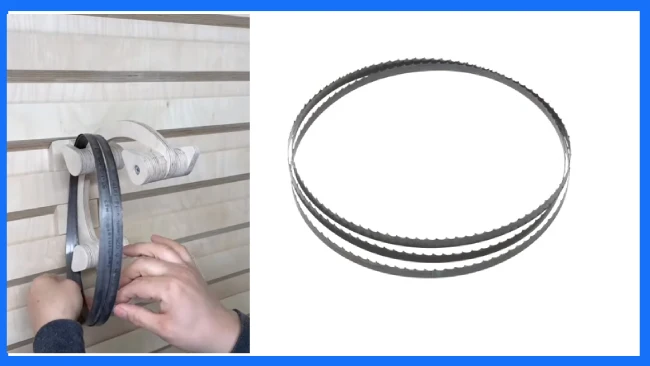
Consider storing your bandsaw blades vertically to maximize space efficiency and ensure easy access to your blades. This method takes advantage of unused wall space, minimizing the footprint of the storage solution. It’s particularly useful for workshops with limited space.
Additionally, storing the blades vertically allows you to use the ceiling for lighter loads, providing a cost-effective and adjustable solution that can accommodate different blade sizes.
When vertically storing your blades, ensure they’re properly secured to prevent any accidents or damage. Use hooks or hangers specifically designed for bandsaw blades, making sure they’re sturdy and capable of supporting the weight of the blades.
Step 6: Periodic Checks and Maintenance
To ensure optimal performance and longevity of your bandsaw blades, inspecting and maintaining them regularly is crucial. Conduct periodic checks to identify any domed areas on the blades. Correct the leveling to ensure even wear and prevent premature blade failure if you find any.
When sending your blades for maintenance or sharpening, consider attaching a binder to them. This will help keep the blades organized and prevent tangling during transportation. Avoid excessive blade bending, as this can lead to additional repair costs.
Major Considerations When Storing Bandsaw Blades
When storing bandsaw blades, I suggest keeping a few things in mind.
1. Prioritize Safety Precautions
To ensure the utmost safety when storing bandsaw blades, follow the manufacturer’s handling instructions carefully.
Utilize guards and consistently prioritize protective gear, such as heavy cloth gloves and long sleeves, to shield yourself from sharp edges. Large bandsaw blades pose unique challenges, and caution is paramount. Always exercise caution during storage and handling.
Regarding bandsaw blades, safety precautions should never be taken lightly. The manufacturer’s handling instructions should be followed meticulously to avoid accidents and injuries. Additionally, using guards will provide an extra layer of protection, preventing accidental contact with the blade.
2. Protection During Fastening
For optimal protection and preservation of bandsaw blades during fastening, consider utilizing various methods, such as protecting the teeth with cardboard sheets, plastic protection stripes, or wax. These measures are essential in ensuring the longevity and efficiency of your blades.
Cardboard sheets are a cost-effective option that provides a physical barrier between the teeth and potential damage. Plastic protection stripes, like those offered by Metamob, offer enhanced safety, efficiency, and reusability.
These stripes are designed to fit snugly over the teeth, preventing accidental contact and minimizing the risk of damage. Furthermore, applying a layer of wax to the teeth can provide lubrication and protection against rust and corrosion.
3. Space Optimization
Consider implementing a storage method that utilizes a curved channel on a piece of wood to optimize space and prevent kinking when storing bandsaw blades. This space optimization technique allows for vertical storage, which maximizes the use of available space.
By storing the blades in a curved channel, you can eliminate the need for flat storage, where blades are laid horizontally and take up more space. The curved channel supports and prevents the blades from bending or kinking, ensuring their longevity and effectiveness.
4. Humidity and Rust Prevention
When storing bandsaw blades, address the issue of humidity and rust prevention to ensure the longevity and effectiveness of your equipment.
For blades that see less action, coat them with WD40 before storage to prevent rusting. This additional layer of protection guarantees that your blades remain in optimal condition, even during prolonged periods of inactivity.
An innovative suggestion involves hanging blades on wine corks nailed to the wall. The porous nature of cork absorbs moisture, acting as a natural barrier against rust while adding a touch of aesthetic ingenuity to your storage solution.
Best Way to Store Your Bandsaw Blades for Longer Life
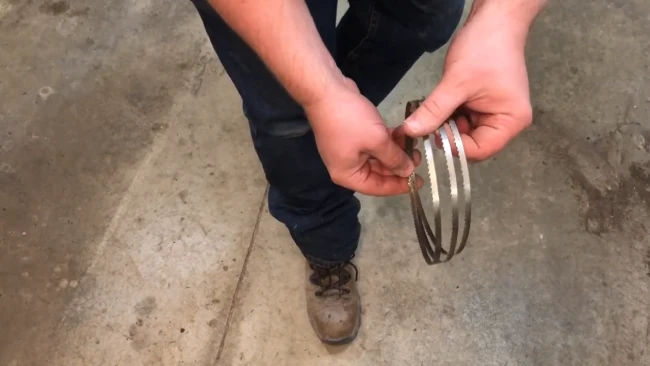
Properly storing bandsaw blades is crucial for their longevity and optimal performance. Following the key steps outlined previously, you can ensure that your blades remain sharp and ready for use.
Also, by integrating those additional considerations into your bandsaw blade storage strategy, you elevate the care and thoughtfulness applied to these precision tools. You will benefit from longer blade life and a commitment to safety, efficiency, and sustainability in your woodworking endeavors.
Remember, storing your bandsaw blades correctly will save you time and money in the long run. Happy sawing.

